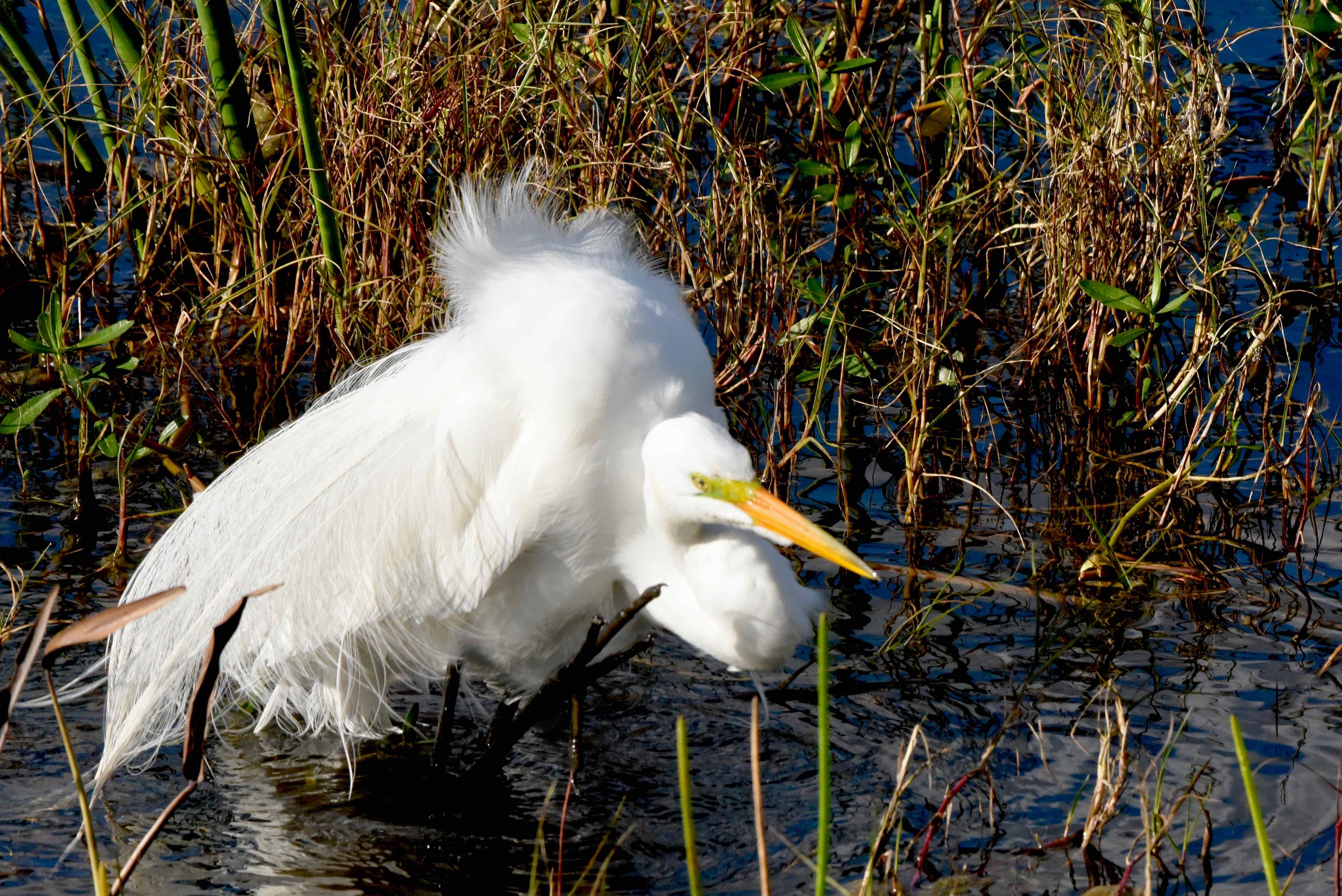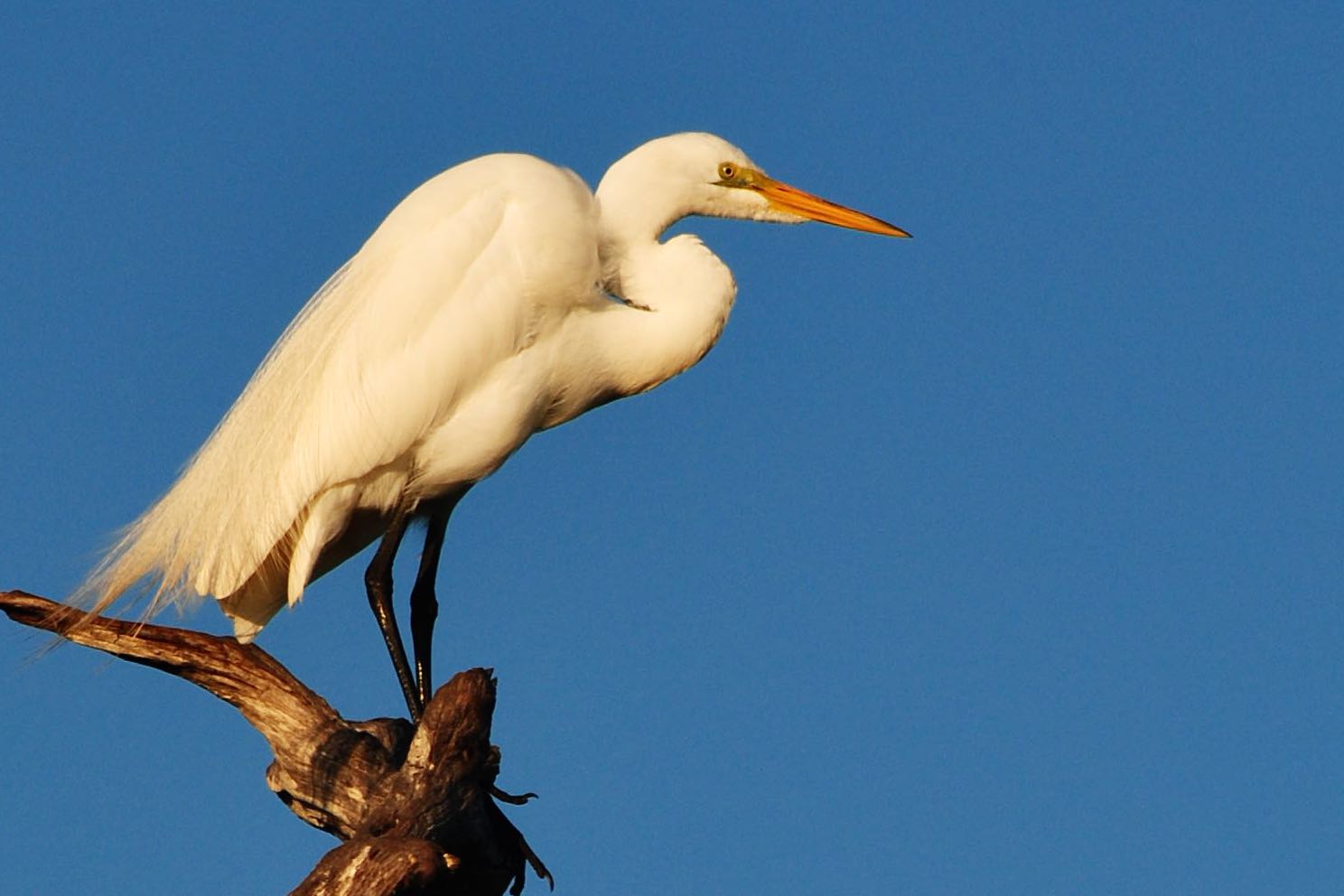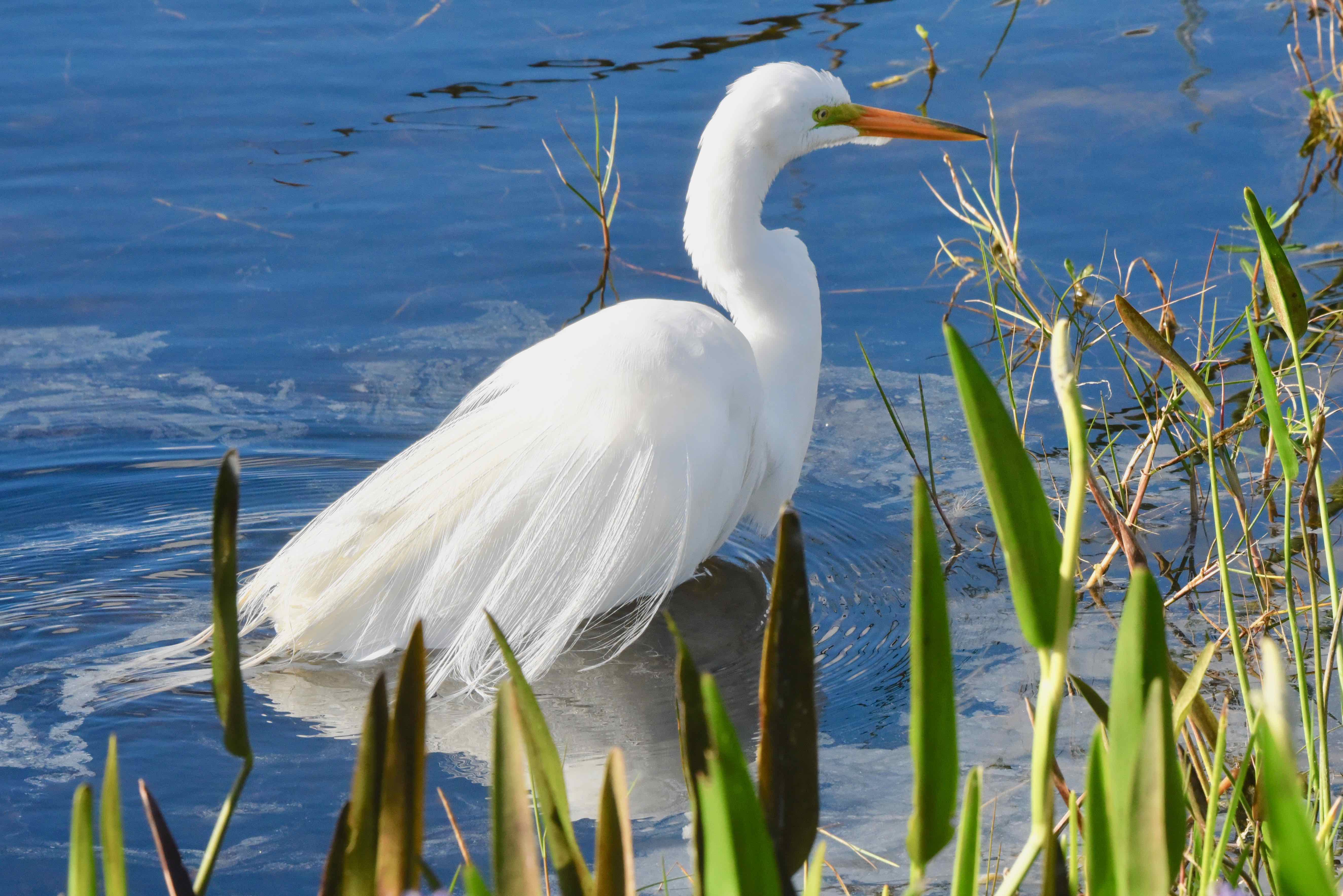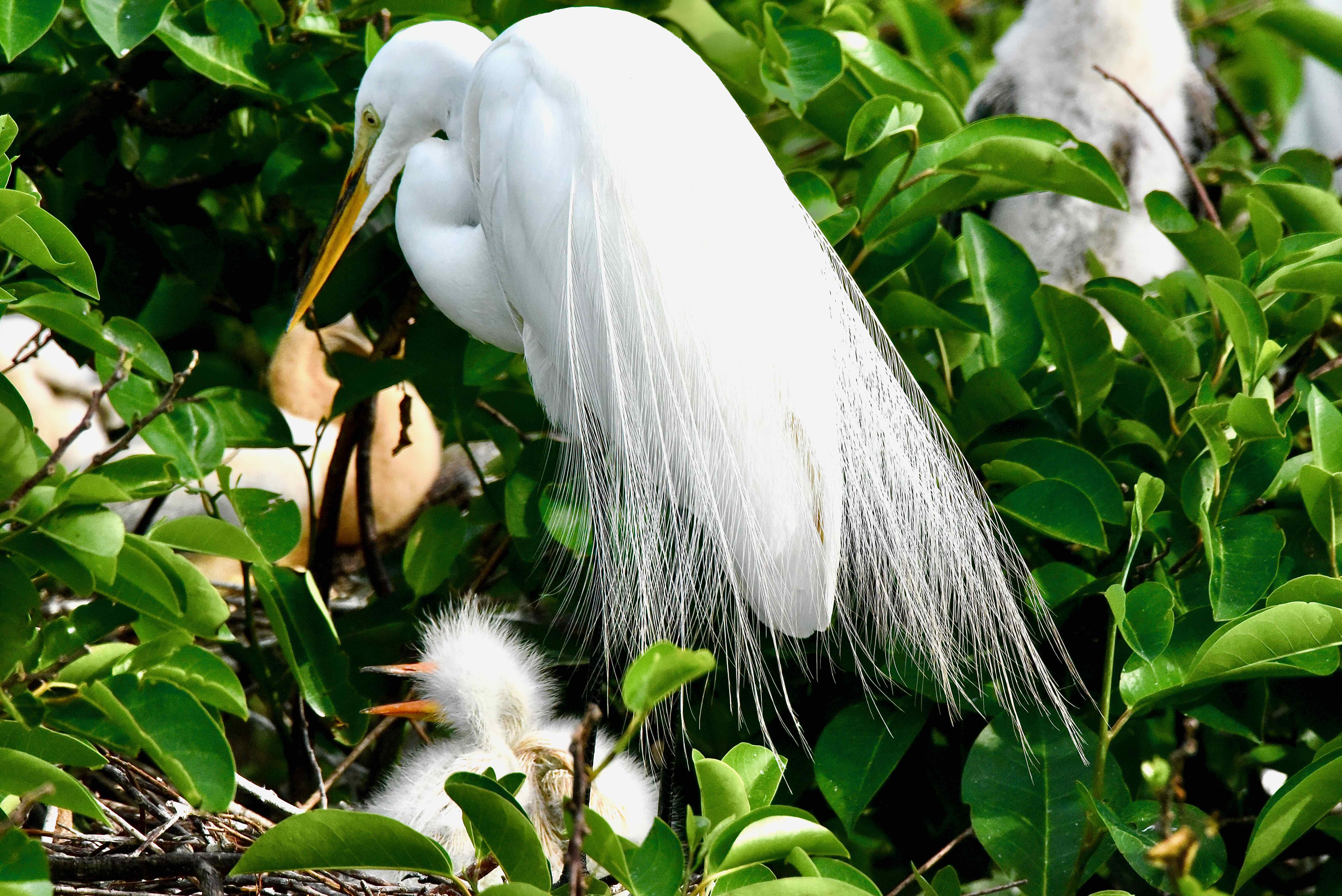
Great egret, photographed at Green Cay Nature Center, Boynton Beach, Palm Beach County, in March 2019.
The great egret, Ardea alba, is a “can’t miss” bird because of its large size and pure white feathers. It’s a common sight year-round in South Florida’s wetlands.
In fact, at certain times of the year, this bird can be seen throughout the United States, either as a part-time resident for breeding or in migration. In parts of California and the southeastern U.S., it is a year-round resident. It is also a permanent resident of parts of the Caribbean. Great egrets will winter south of a line drawn across the country through California's Central Valley to North Carolina. That includes Florida, the Caribbean, Central America and South America except for the Andean backbone.
It is a very large bird, either the third or fourth largest in our region, with a body length of more than three feet and a wingspan of more than four. It is pure white, with a yellow-orange bill and black legs and feet. The closest bird in appearance is the snowy egret, but snowies are substantially smaller, have bright yellow feet and a black bill. The only birds larger: the sandhill crane, the great blue heron, and if you count it as a separate species, the great white heron. Of those three, only the great white heron compares in looks, but it has a much more substantial bill that easily separates it from the great egret. Great white herons are also fairly rare, and pretty much limited to the extreme southern part of Florida.
In breeding season, a portion of the great egret’s face turns a neon green, as seen in the photo above. It also displays long, filament-like plumes called aigrettes, which were almost the ruin of this bird. In the late 19th and early 20th centuries these plumes were used to adorn ladies’ hats; demand was such that 95 percent of the great egret population was wiped out. Outrage over the slaughter provided the impetus for the passage of the first federal laws protecting the egret and other birds. The great egret became the symbol of the National Audubon Society.
Fish are the dietary mainstay of the great egret, but we've seen them eat frogs and young birds. They'll also eat insects and small mammals. They will stalk the shallows for prey or stand perfectly still and ambush dinner.
Great egrets are social birds. They will form nest colonies with other birds, such as anhingas, great blues and wood storks, in trees and on islands out of the reach of predators such as raccoons. The pond apple tree islands of Wakodahatchee Weltands are one of the best places to see nesting egrets close up.
Great egrets are monogamous during breeding season, but according to the Cornell Laboratory of Ornithology, it isn't known whether these bonds extend year to year. Females lay as many as a half-dozen eggs, which take three to four weeks to hatch. Both parents handle incubation duties, and both feed the young. Sibling rivalry can be a deadly affair; if food is scarce, larger nestlings will kill smaller members of the family. After two or three weeks, the young walk about the nest; after six or seven, they can fly.
Since the early 20th century, great egret numbers have been increasing. That trend has continued in recent decades, but habitat loss and degradation are threats.
Great egrets are members of Ardeidae, the family of herons, egrets and bitterns.
Green Cay Nature Center



